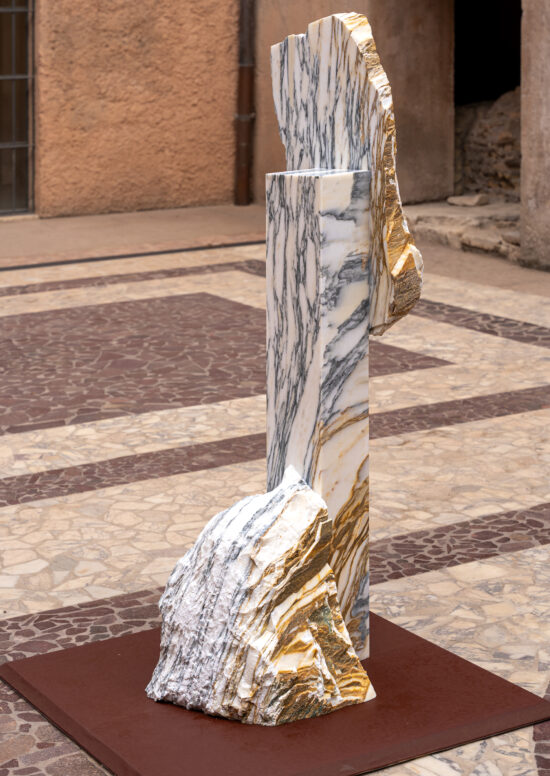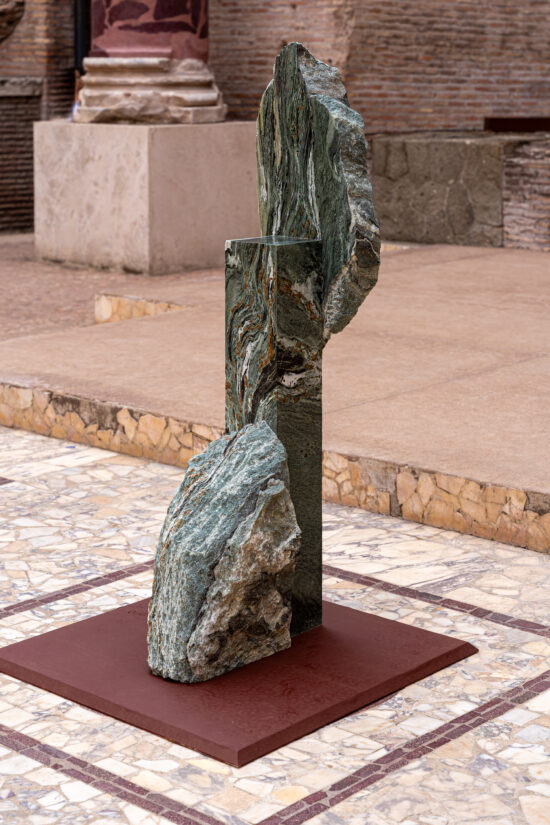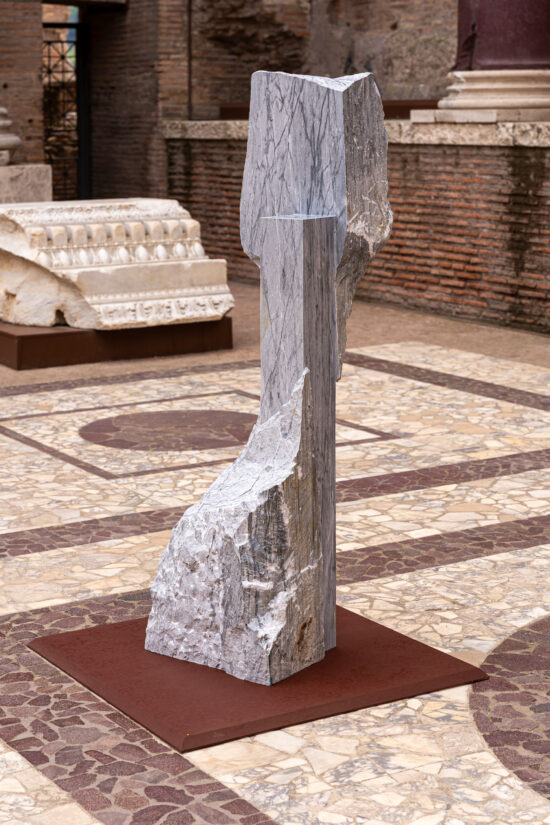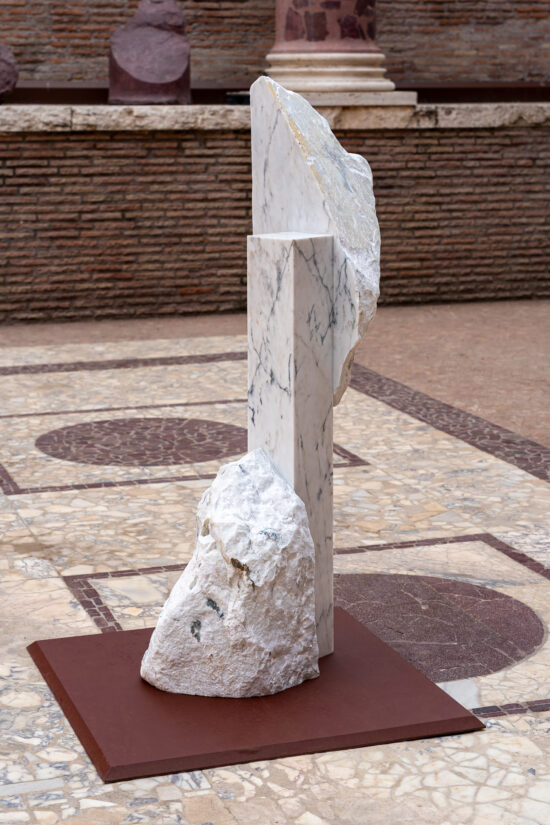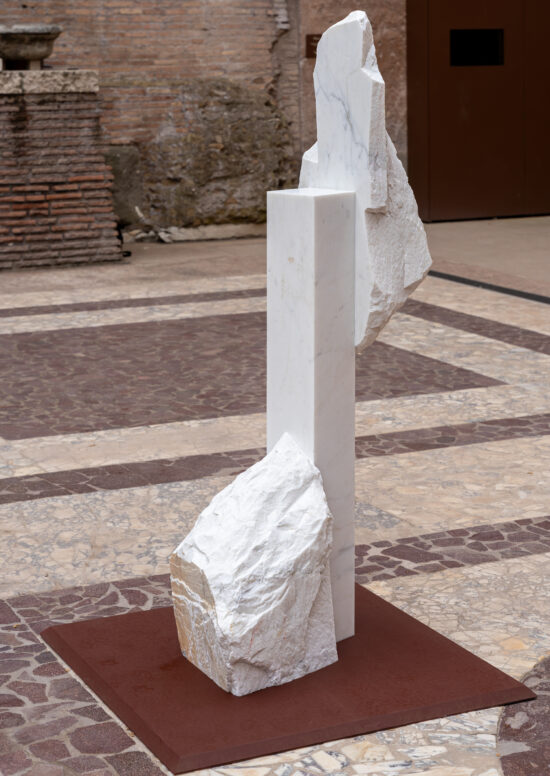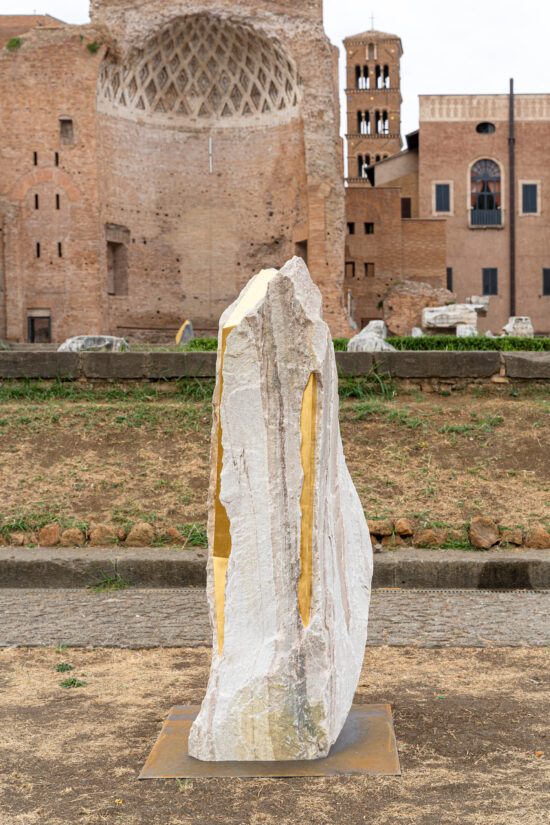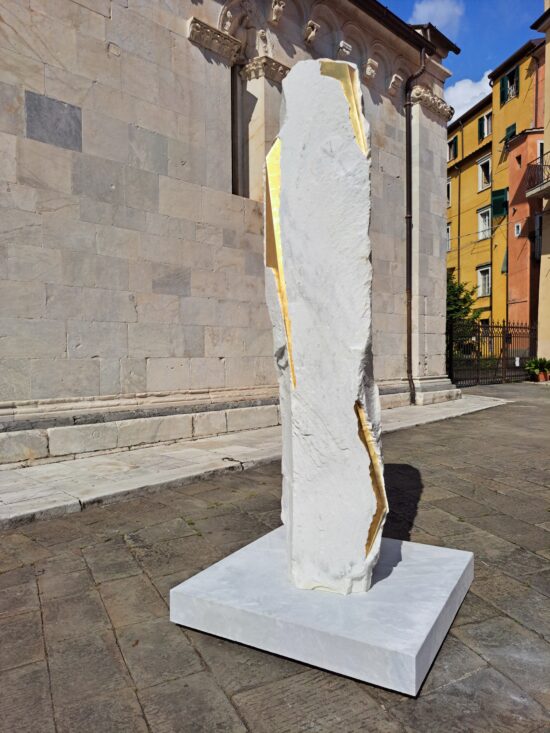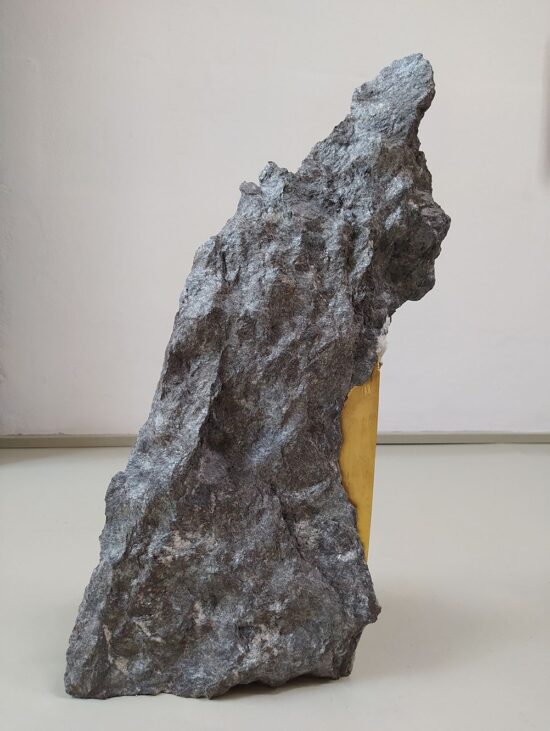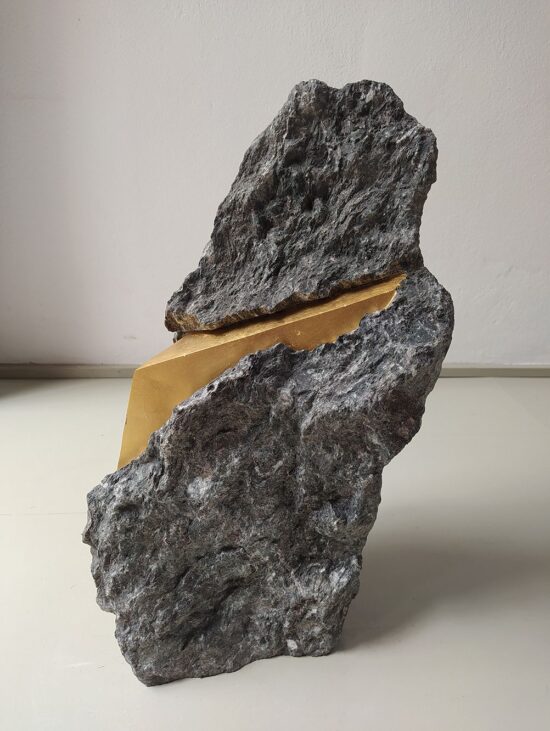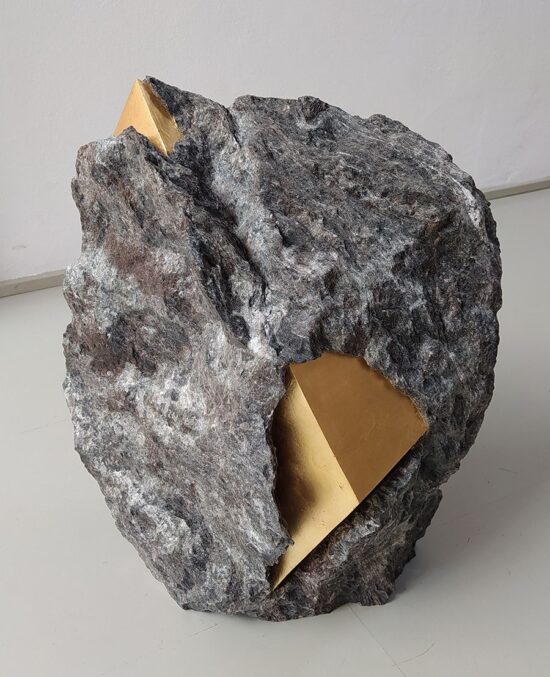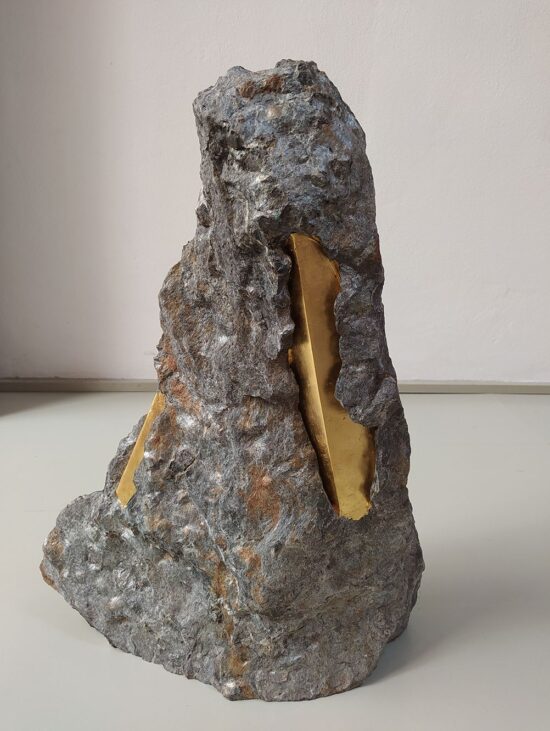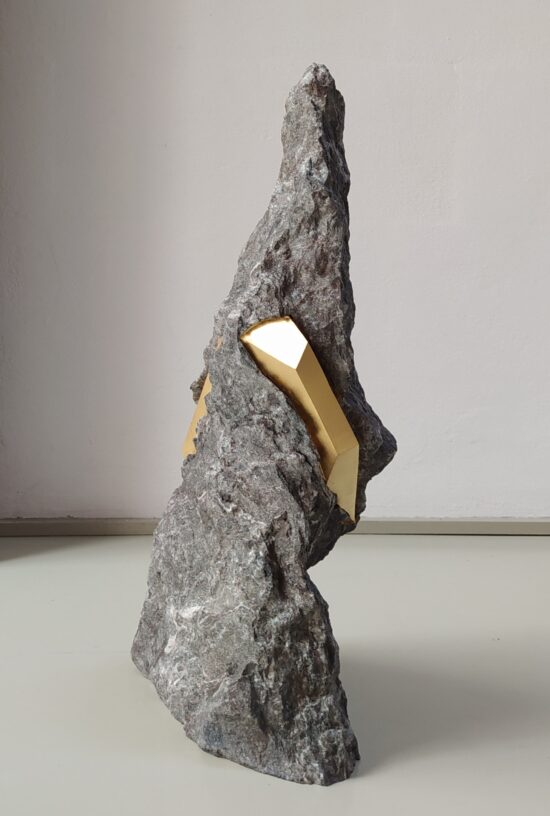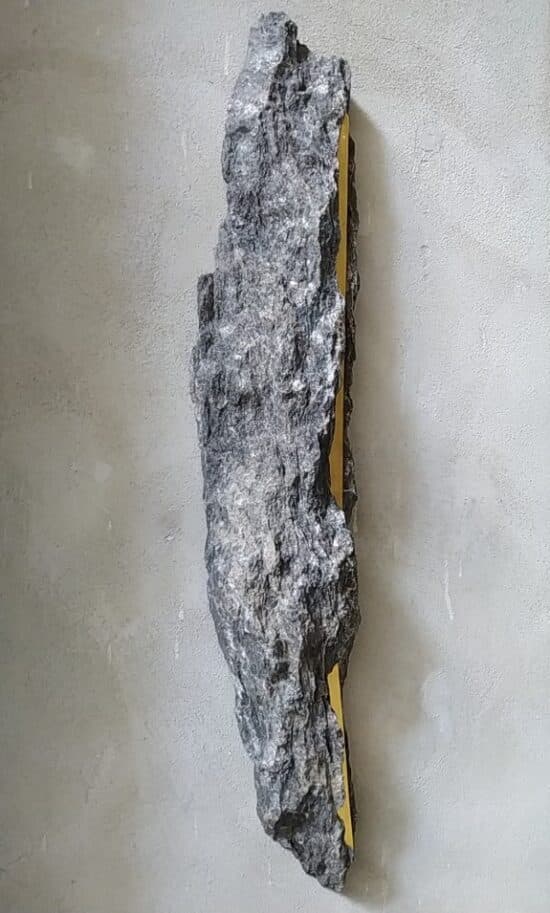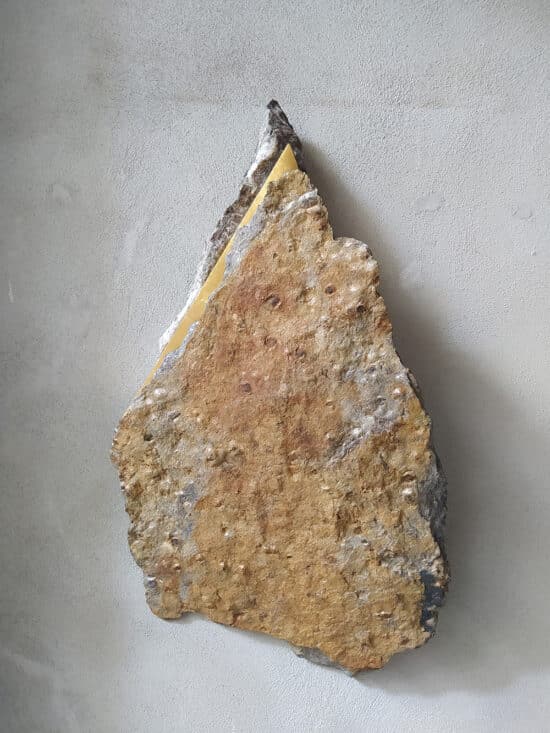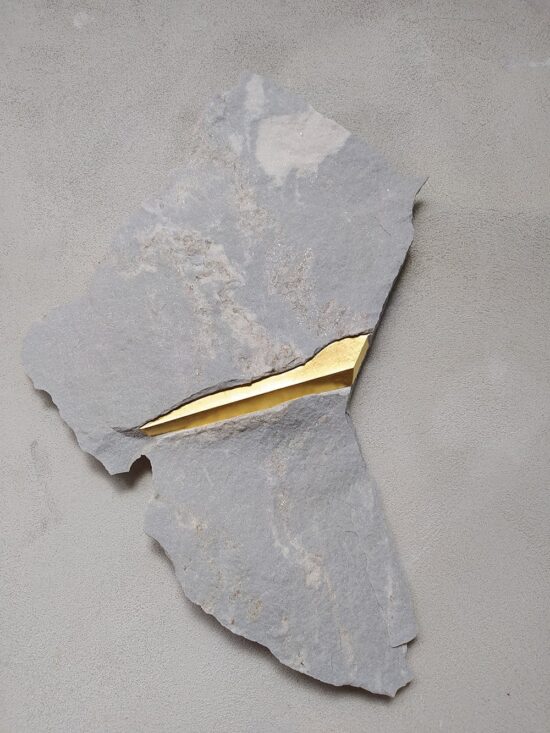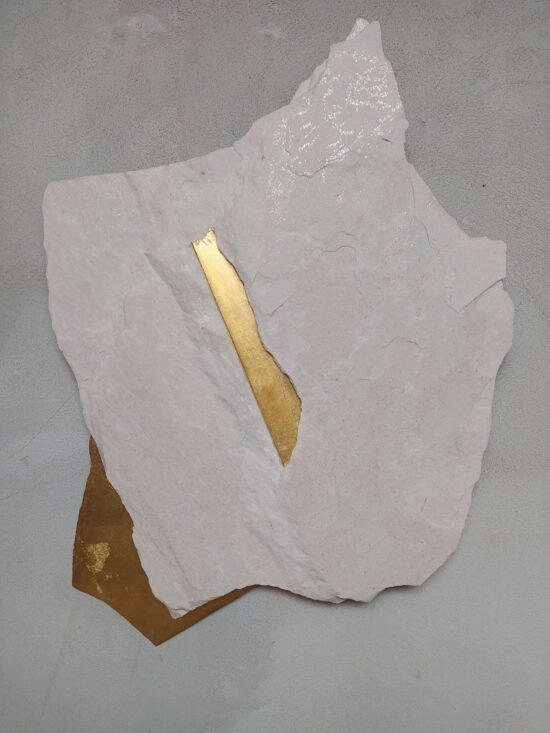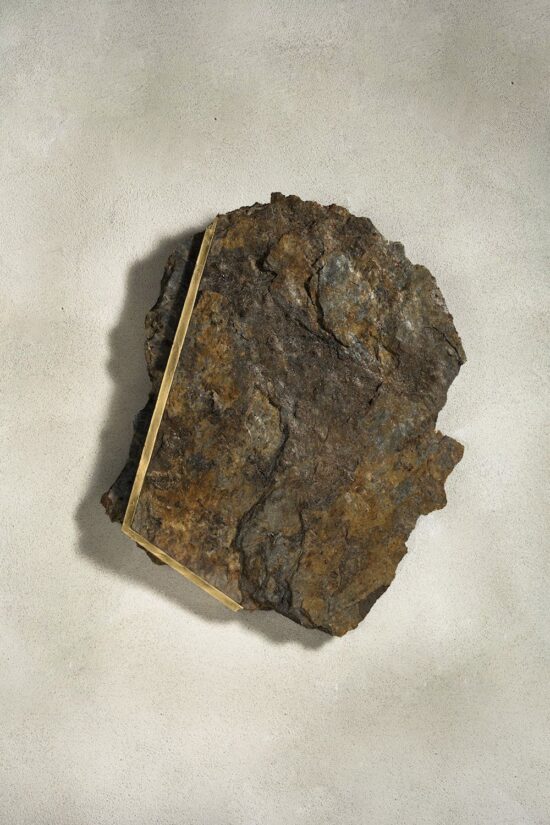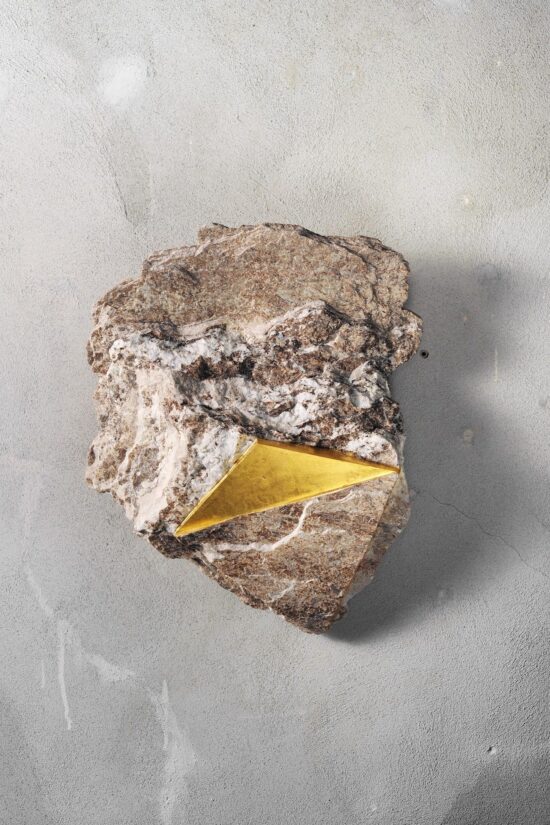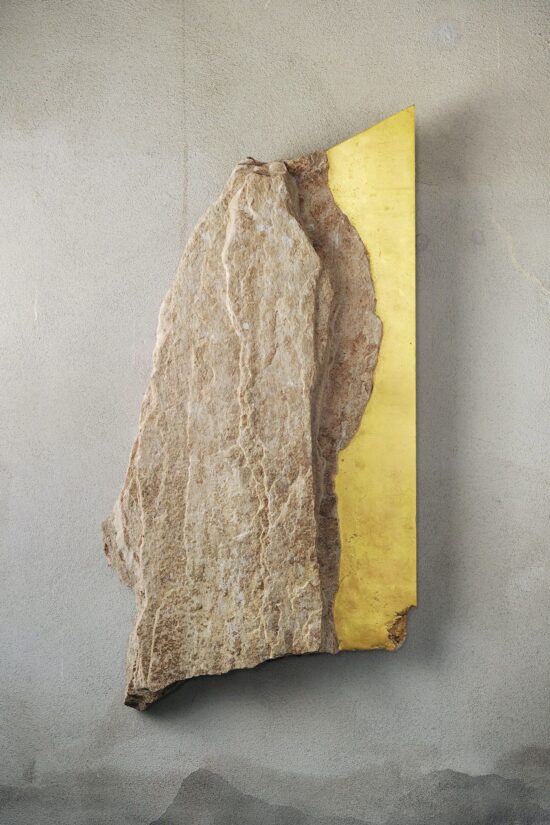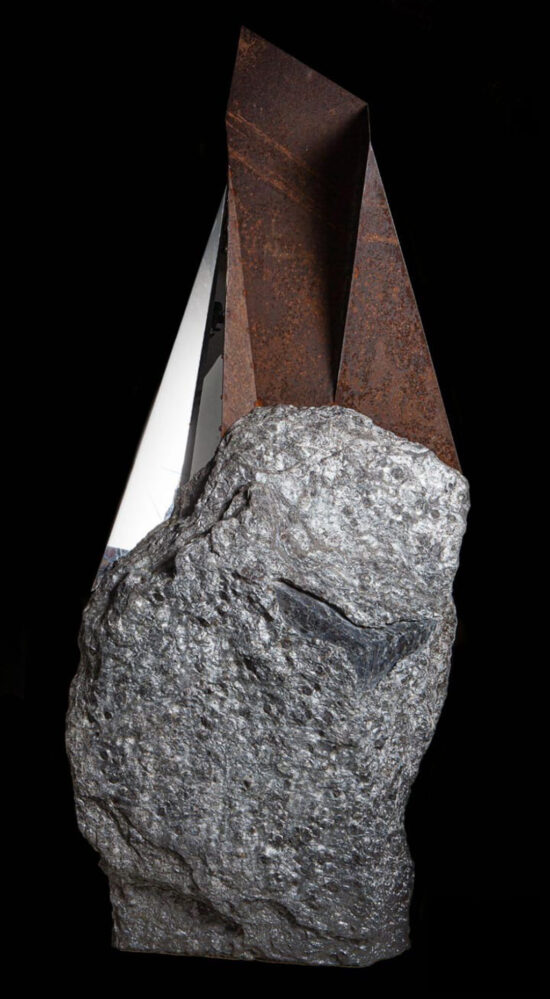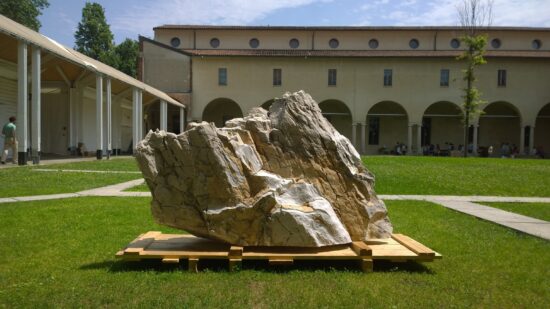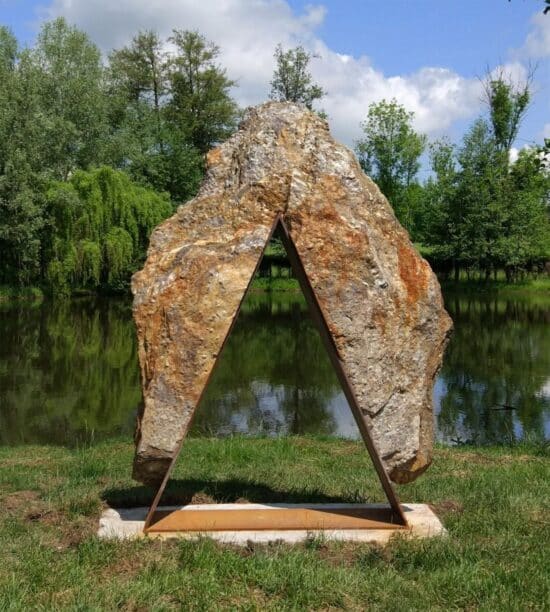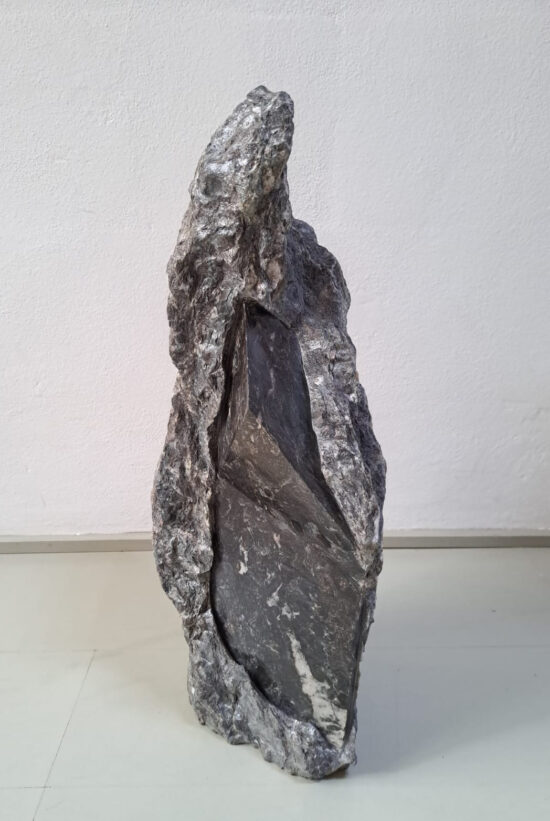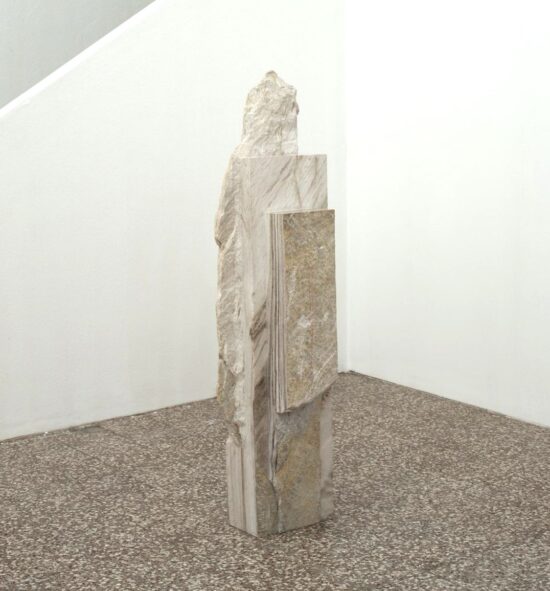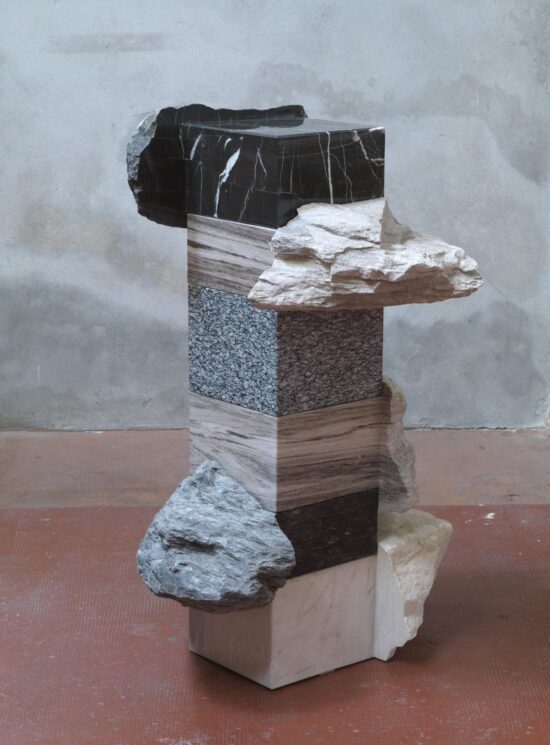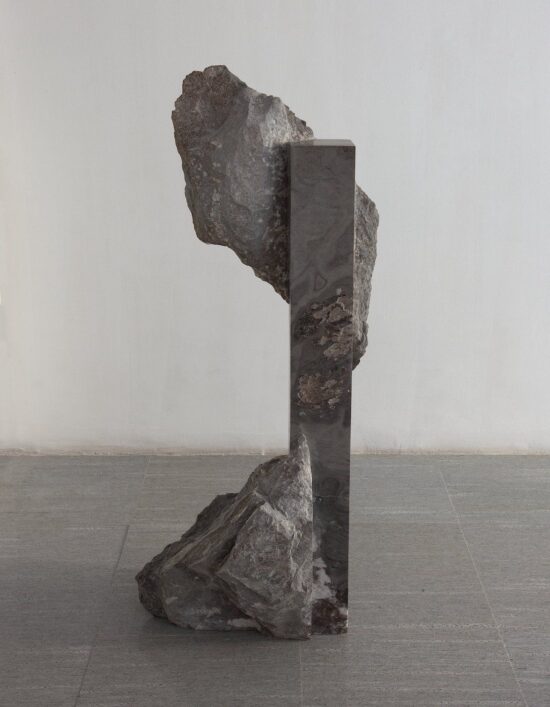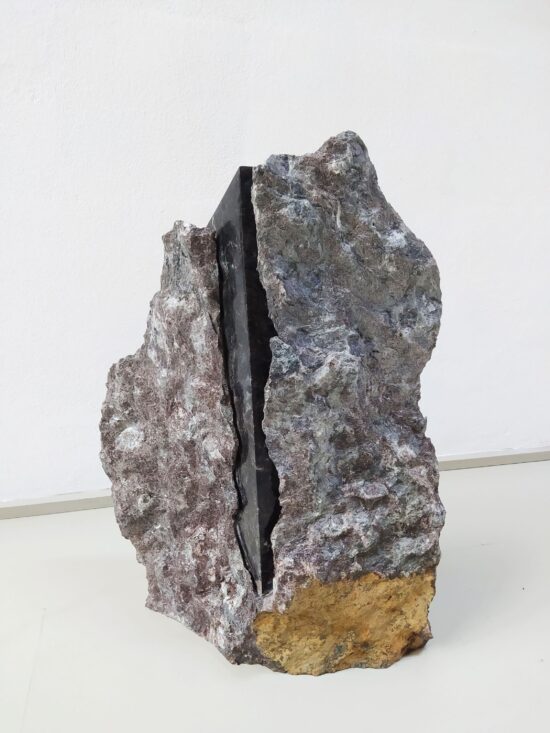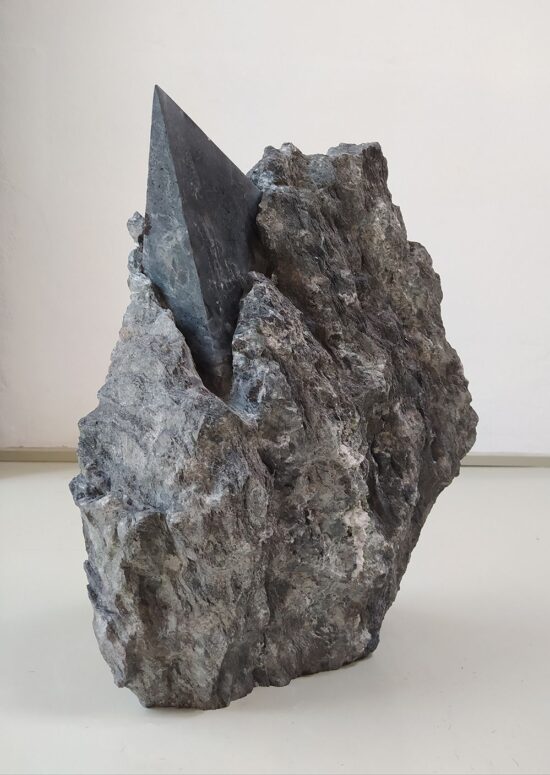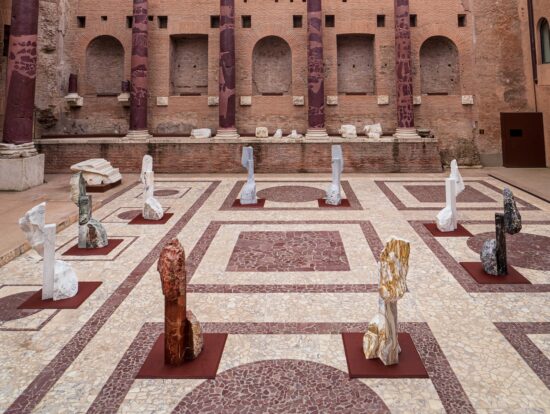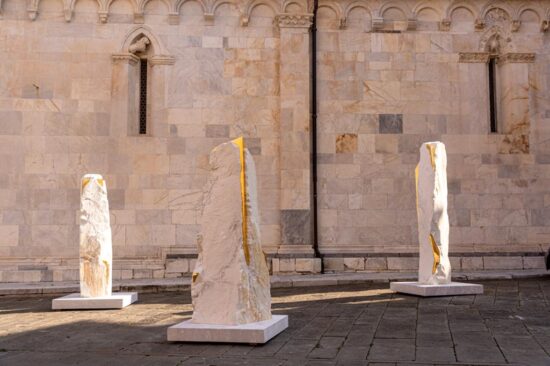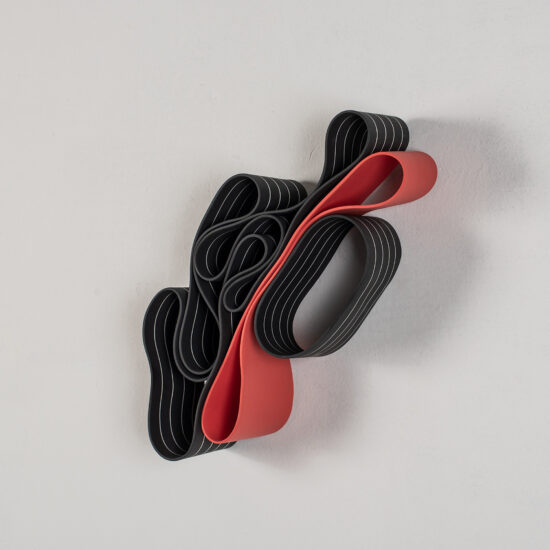Korai
Sezione aurea (Golden section)
Wall sculptures
Large scale sculptures
Others
Biography
In his contemporary sculpture, Italian artist Mattia Bosco seeks to create a synthesis between concept and form. The two combine with balance and harmony, bringing his unique, abstract stone sculptures to life.
From philosophy to sculpture
Mattia Bosco was born in Milan in 1976, into a family of artists. His father is a painter and his mother, an art restorer, taught him the gold leaf gilding technique, among others. Classical studies, in particular in the area of philosophy, led him to develop his own personal reflections with regard to artistic creativity and aesthetics. Upon completing his studies, he set himself up in a former artist’s studio in Milan, where he began working intensively in ceramic, the only material with which he was familiar at the time. He recounts: “I would say that no-one taught me to work in ceramic, but neither did I learn all by myself; it was the material itself that taught me how it wanted to be worked”.
However, sculpture in stone soon took the place of ceramic in his endeavours. While clay “welcomed” every gesture made by the artist, in a thoroughly permeable and passive manner, stone offered a form of resistance, “responding” to the sculptor’s every stroke, allowing him to initiate a genuine, formal dialogue with the material. It is thanks to this potential that lies within stone that the artist has come to understand the inseparability of form and material. In closely examining the stone, he realises that it is a potential sculpture, always leaning towards a certain form.
“Sculpture [in stone] follows form, in just the same way as plants follow the light. Plants sense the light; they do not create it: they recognise it and feed on it. And just as plants do not invent the light, the sculptor does not invent form; he finds it in objects and continues its process of formation.”
Sculptures in stone, from quarry to gallery
Mattia Bosco’s work begins in the marble quarries, where he searches for rocks for his sculptures, from amongst the extracted fragments. This first, and very important step in his work process is a genuine audition: the artist “listens” to the rocks and selects those in which he sees potential, which is often associated with fascinating complexity in the surface. In selecting them, he thus alters their destiny and plucks them from anonymity, transforming them into unique works of art. Once selected, he begins sculpting, cutting the base of the rocks to alter their positioning, from horizontal to vertical. The stone sculpture, although abstract, is thus significantly anthropomorphised.
The observation of the stone allows him to select the surface lines with which to make his mark, using rotating cutters. The sculptor’s intervention here is simple, confined and restricted, and aims only to draw out and purify the form already present in the stone. He explains: “The sculptor’s intervention is a collaboration, acting in an assisting role to the manifest availabilities and possibilities. […] It is not a case of man on one side and the world on the other, […] the relationship between me, who is sculpting, and the material itself, is a tussle between two parts of the world, engaging in a show of force.”
In order to further accentuate the chosen points and sections, the artist often applies gold or silver leaf, which act as catalysts for the sparkling gold presence already visible in the stone, thanks to mica, a group of minerals with a metallic sheen. For Mattia Bosco, if stone is the solid incarnation of time – a kind of unique fragment of the world and its history – gold is akin to light, in solid state. The artist occasionally integrates colour or other materials into his stone sculptures, such as stainless steel. He still works in ceramic, and also in wood, exploring the potential offered by the various materials, within the context of a mutual relationship of coalition.
Recognition by contemporary art institutions around the world
Mattia Bosco lives and works between Milan and the mountainous Piémont region. The contemporary sculptor has exhibited his work in several renowned Italian and international institutions, such as the Museum Tinguely in Basel (2015), as well as the Triennale Design and Art Museum (2010 and 2013) and the Diocesano Museum (2008 and 2015) in Milan. His sculptures in stone have earned him several awards and artist’s residences, and in 2015 he was invited to the TEDxVicenza TED talk event in Vicenza, Italy. Since its reopening in 2020, he has also been involved with the management of the Casa degli Artisti (Artist’s House), a dedicated centre for artist’s residences, production and the diffusion of contemporary art in Milan.
CV
Exhibitions
- SOLO SHOWS
- 2023 – “Korai”, Colosseum Archeological Park, Rome (Italy)
- 2023 – “Sezione Aurea”, White Carrara 2023, Carrara, Italy
- 2019 – “In-Origine”, Fumagalli Art Gallery, Milano
- 2019 – “Time is a Child Playing”, Palazzo Borromeo, Milano
- 2018 – “Materia intesa”, Ex Cimitero San Pietro in Vincoli, Torino
- 2018 – “Petra Genetrix”, Lorenzo Vatalaro Gallery, Milano
- 2018 – “Art in Studio”, Studio Danovi Associati, Milano
- 2017 – “Rewrites”, MARS, Milano
- 2015 – “Like Wax for Bees”, Diocesano Museum, Milano
- 2015 – “Violent Flowers. Phototropism Towards the Form”, Atipografia, Arzignano
- 2013 – “Limewharf”, Vyner Street, London
- 2013 – “Sculptural Coffee Cups”, Triennale Design Museum, Milano
- 2012 – “New Sculptures”, Federico Luger Gallery, Milano
- 2008 – “The Tree of Eternal Life”, Art Box, Milano
- 2008 – “The Temple Belongs to Those Who Live There”, Crucifixion, Museo Diocesano, Milano
- 2007 – “The Temple Belongs to those who Inhabit it”, Crucifixion, S. Stefano Church, Milano
- 2007 – “The veins of the World”, Via Dante-Largo Cairoli, Milano
- 2007 – “The veins of the World”, Campo S. Stefano, Venice Biennale, Venice
- GROUP SHOWS
- 2022 – “Concretezza Dell’Essenzialità”, Fumagalli Gallery, Milano
- 2018 – “The Useless Land”, curated by Irene Sofia Comi, Castello di Lajone, Piedmont
- 2018 – “Country Unlimited”, curated by Nicoletta Rusconi, Cascina Maria, Agrate Conturbia
- 2017 – “Locus Amoenus”, curated by Fabio Carnaghi, Museo Tornielli, Ameno
- 2017 – “Country Unlimited”, curated by Nicoletta Rusconi, Cascina Maria, Agrate Conturbia
- 2017 – “Fire to Landscape”, curated by Gianluca D’Inca Levis, Forte di Montericco, Pieve di Cadore
- 2015 – “HRM199Ltd.”, Museum Tinguely, Basel
- 2015 – “Standing Stones” (collaboration with Haroon Mirza), Frieze Sculpture Park, London
- 2015 – “Cure”, curated by Francesca Cattoi, Camec, La Spezia
- 2014 – “Database 2014”, curated by Federica Forti, Marble Museum, Carrara
- 2014 – “15° Cairo Award”, Permanente Museum, Milan
- 2014 – “The inner outside (bivouacs)”, curated by Gianluca D’Inca Levis, New space of Casso – Contemporary Dolomites, Casso
- 2014 – “The Entrophy collapse”, curated by Alberto Zanchetta, Contemporary Art Museum of Lissone, Lissone
- 2012 – “Free Everyone!”, curated by Gianluca Ranzi, Cantieri Culturali ex Macelli, Prato
- 2011 – RUN N°3, Room Gallery, Milano
- 2010 – “What Things Are We”, curated by Alessandro Mendini, Triennale Design Museum, Milano
- 2009 – “Ahead of Time”, 2134 NW Miami Court, Wynwood Arts Disrtict, Miami
- 2009 – “Sculptures in Town”, Permanente Museum, Milano
- 2007 – “The Enchantment of Illusion”, Argelati Gardens, Milano
- 2005 – “Art of Italian Design”, curated by Alessandro Mendini, Megaron Plus Museum, Athens
- RESIDENCE
- 2019 – “Idea Salento”, Gagliano del Capo
- 2015 – Atipografia, Arzignano
- 2014 – “Database”, la Spezia
- 2010 – “The Celadon Project”, Seoul
Awards & Residencies
- 2012 – Second Place, Henraux Foundation Award
- 2007 – First Place, “The Rural Muse”
Articles
Korai, sculptures by Mattia Bosco at the Colosseum Archeological Park
The work of Italian artist Mattia Bosco will be showcased at the Temple of Venus and Rome, located between the Colosseum and the Roman Forum, with an...
Sculpture: White Carrara 2023 – “Sezione Aurea” by Mattia Bosco
At the invitation of White Carrara 2023, Italian artist Mattia Bosco will have a monumental installation on display in the historic city center of...
The art of making art
Certaines productions artistiques sont une véritable réflexion sur la création elle-même. Qu’est-ce qui définit l’art ? Est-ce le discours...


